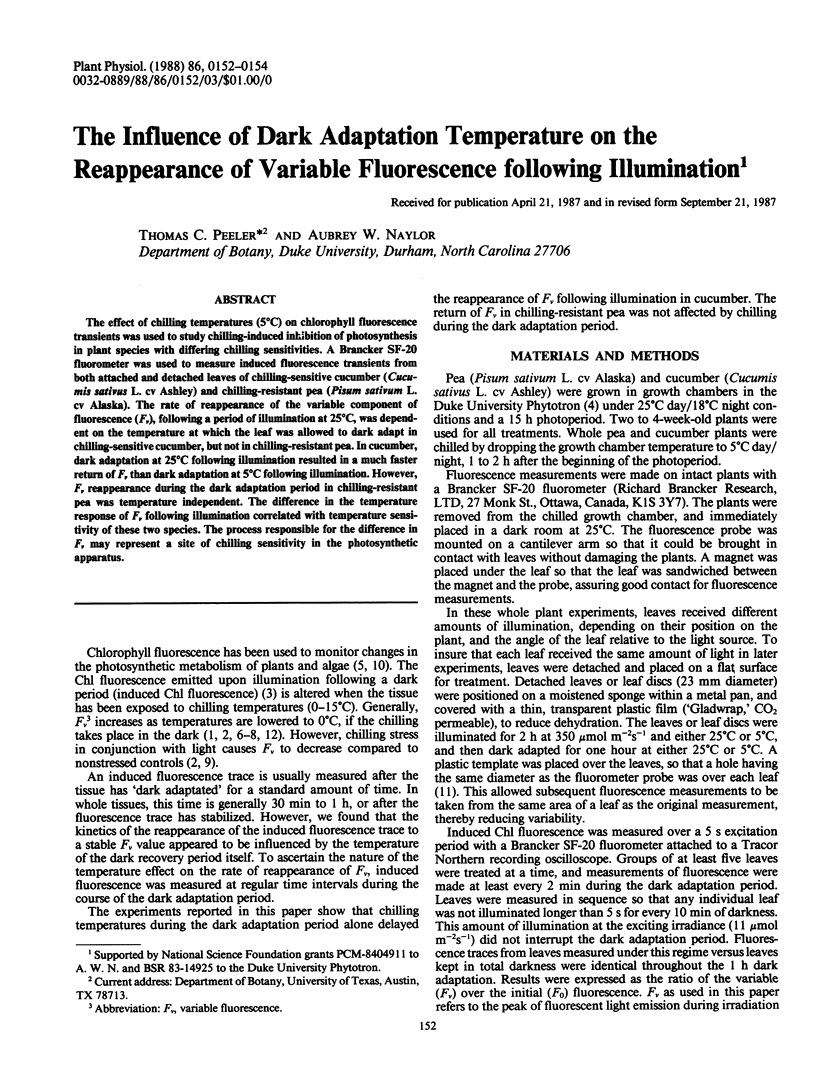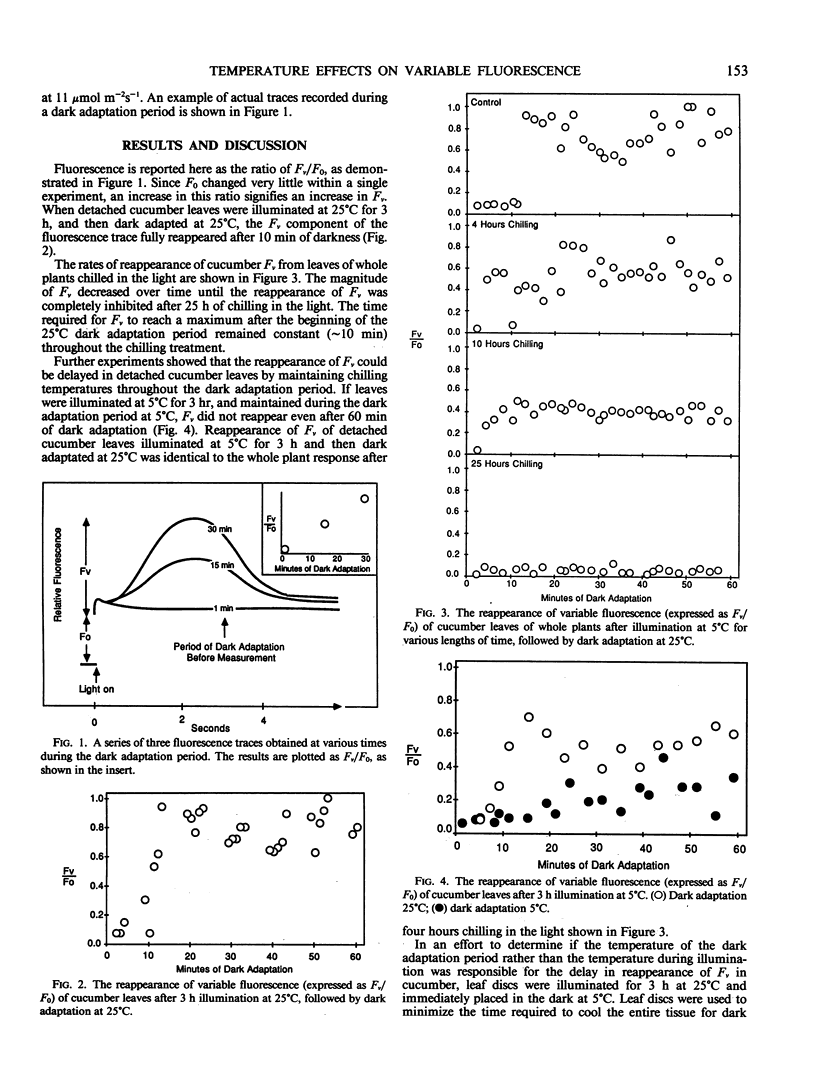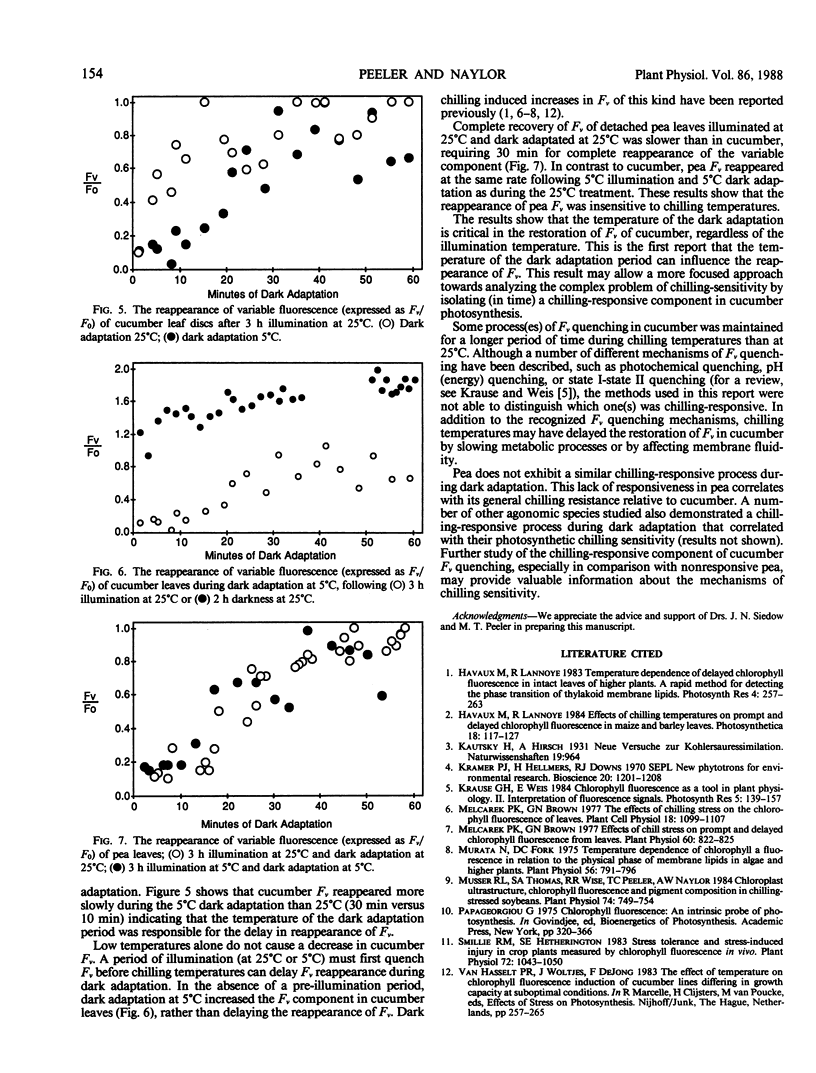Abstract
The effect of chilling temperatures (5°C) on chlorophyll fluorescence transients was used to study chilling-induced inhibition of photosynthesis in plant species with differing chilling sensitivities. A Brancker SF-20 fluorometer was used to measure induced fluorescence transients from both attached and detached leaves of chilling-sensitive cucumber (Cucumis sativus L. cv Ashley) and chilling-resistant pea (Pisum sativum L. cv Alaska). The rate of reappearance of the variable component of fluorescence (Fv), following a period of illumination at 25°C, was dependent on the temperature at which the leaf was allowed to dark adapt in chilling-sensitive cucumber, but not in chilling-resistant pea. In cucumber, dark adaptation at 25°C following illumination resulted in a much faster return of Fv than dark adaptation at 5°C following illumination. However, Fv reappearance during the dark adaptation period in chilling-resistant pea was temperature independent. The difference in the temperature response of Fv following illumination correlated with temperature sensitivity of these two species. The process responsible for the difference in Fv may represent a site of chilling sensitivity in the photosynthetic apparatus.
Full text
PDF


Selected References
These references are in PubMed. This may not be the complete list of references from this article.
- Melcarek P. K., Brown G. N. Effects of chill stress on prompt and delayed chlorophyll fluorescence from leaves. Plant Physiol. 1977 Dec;60(6):822–825. doi: 10.1104/pp.60.6.822. [DOI] [PMC free article] [PubMed] [Google Scholar]
- Musser R. L., Thomas S. A., Wise R. R., Peeler T. C., Naylor A. W. Chloroplast ultrastructure, chlorophyll fluorescence, and pigment composition in chilling-stressed soybeans. Plant Physiol. 1984 Apr;74(4):749–754. doi: 10.1104/pp.74.4.749. [DOI] [PMC free article] [PubMed] [Google Scholar]
- Smillie R. M., Hetherington S. E. Stress tolerance and stress-induced injury in crop plants measured by chlorophyll fluorescence in vivo: chilling, freezing, ice cover, heat, and high light. Plant Physiol. 1983 Aug;72(4):1043–1050. doi: 10.1104/pp.72.4.1043. [DOI] [PMC free article] [PubMed] [Google Scholar]


